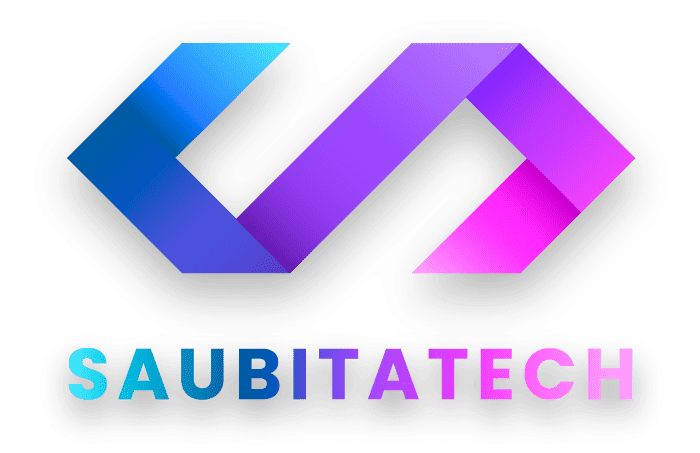When it comes to recruiting top talent, businesses are continuously looking for ways to streamline the process, reduce costs, and improve the quality of candidates. One of the most effective ways to achieve these goals is by partnering with a Recruitment Process Outsourcing (RPO) provider. An RPO provider is a company that manages all or part of your recruitment process, helping you find and hire the right talent faster and more efficiently.
In this blog, we’ll walk you through a step-by-step guide to partnering with an RPO provider, the benefits it offers, and why it’s essential for your business’s recruitment strategy. By the end of this guide, you will have a clear understanding of how RPO can transform your hiring processes.
What Is Recruitment Process Outsourcing (RPO)?
Before diving into the steps of partnering with an RPO provider, it’s important to understand exactly what RPO is and how it works. RPO is a type of business process outsourcing (BPO) where a company outsources all or part of its recruitment functions to a third-party provider.
The RPO provider takes on the responsibility of sourcing, screening, interviewing, and onboarding candidates. They act as an extension of your HR department, using their expertise to handle recruitment tasks efficiently and at scale. RPO providers can manage the entire recruitment cycle or just specific parts, such as candidate sourcing or employer branding.
Now that we understand what RPO is, let’s go through the process of partnering with an RPO provider step by step.
Step 1: Define Your Recruitment Needs and Goals
Before approaching an RPO provider, you need to have a clear understanding of your recruitment needs and goals. Ask yourself questions like:
- What positions do you need to fill?
- How many hires do you anticipate in the next year?
- Are you looking to improve your employer brand or candidate experience?
- Do you need help with specific tasks, such as sourcing or screening?
By defining your needs upfront, you’ll be able to communicate your expectations more effectively with potential RPO partners. This will ensure that the provider you choose can meet your specific requirements and help you achieve your hiring goals.
Tip: If you’re not sure about your exact needs, you can consult with the RPO provider to help you identify gaps or inefficiencies in your current hiring process.
Step 2: Research Potential RPO Providers
Once you have a clear understanding of your needs, the next step is to research potential RPO providers. There are many companies offering RPO services, so it’s important to find one that aligns with your company’s culture, industry, and recruitment goals.
Scalable Hiring Solutions: How RPO Helps During Seasonal and High-Growth Periods

Here are some key factors to consider when choosing an RPO provider:
- Experience in Your Industry: Look for a provider with experience recruiting in your industry. They will have a better understanding of the specific skills, qualifications, and talent trends in your field.
- Technology and Tools: The best RPO providers leverage technology to streamline the recruitment process. They use applicant tracking systems (ATS), artificial intelligence (AI), and other tools to enhance candidate sourcing, screening, and engagement.
- Scalability: Your recruitment needs may change over time, especially as your company grows. Choose an RPO provider that can scale their services to accommodate your evolving requirements.
- Customization: Every business is unique, so it’s important to partner with a provider that can customize their services to meet your specific needs. Whether you need a full-service recruitment process or only assistance with specific stages, the RPO provider should be flexible and adaptable.
Once you’ve narrowed down your options, schedule consultations with each RPO provider to discuss your needs and evaluate their offerings. This is an important step in ensuring you select the right partner for your business.
Step 3: Evaluate and Choose the Right RPO Provider
After researching potential RPO providers, it’s time to evaluate them and make a decision. Here are some factors to consider during the evaluation process:
- Case Studies and References: Ask the RPO provider for case studies and client references to understand their track record. This will give you insight into their ability to deliver results and work with businesses like yours.
- Cultural Fit: The RPO provider should align with your company’s values and culture. Since they will be interacting with your candidates and potentially representing your employer brand, it’s crucial that their approach and values resonate with your organization.
- Communication and Collaboration: Effective communication is key when working with an RPO provider. Choose a provider that is responsive, transparent, and willing to collaborate with your internal team to ensure a seamless recruitment process.
- Cost Structure: RPO providers offer various pricing models, such as pay-per-hire, subscription-based, or project-based. Make sure you understand the cost structure and ensure it fits within your budget while providing value.
Step 4: Onboard and Collaborate with Your RPO Provider
Once you’ve selected the right RPO provider, the next step is onboarding. This is when the provider gets up to speed with your business and recruitment needs. During the onboarding process, you’ll work closely with the provider to:
- Align on Recruitment Strategy: Work together to develop a recruitment strategy that aligns with your company’s goals and values. This may involve defining your ideal candidate profile, refining job descriptions, and setting clear expectations for the recruitment process.
- Provide Access to Necessary Tools and Resources: Make sure the RPO provider has access to the tools, systems, and resources they need to perform their role effectively. This includes access to your applicant tracking system (ATS), hiring managers, and relevant documentation.
- Train Internal Teams: If necessary, train your internal teams (HR, hiring managers, etc.) on how to collaborate with the RPO provider. This will help ensure a smooth transition and effective partnership.
Step 5: Monitor and Optimize the Partnership
Partnering with an RPO provider is an ongoing relationship, and it’s important to continuously monitor and optimize the partnership to ensure success. Here are a few steps to help you manage the relationship:
- Track Key Metrics: Monitor key performance indicators (KPIs) such as time-to-fill, cost-per-hire, and quality of hire. This will help you measure the effectiveness of the partnership and identify areas for improvement.
- Provide Feedback: Regularly provide feedback to the RPO provider on their performance. Open communication helps address any concerns or challenges early on and ensures the partnership remains strong.
- Collaborate on Continuous Improvement: The recruitment process is always evolving, and your RPO provider should be proactive in suggesting improvements and implementing new strategies. Work together to continuously optimize the recruitment process.
Cost-Efficiency in Recruitment: The RPO Advantage for Growing Businesses
Step 6: Evaluate the Results and Scale as Needed
As your partnership with the RPO provider matures, it’s important to evaluate the results and consider scaling the relationship if needed. After working with the provider for a few months, you should assess the impact of the partnership on your recruitment efforts. Consider:
- Has the time-to-hire improved?
- Are you attracting higher-quality candidates?
- Has your cost-per-hire decreased?
If you’re seeing positive results, it may be time to scale the partnership by increasing the scope of services or extending the partnership to other areas of recruitment.
Conclusion
Partnering with an RPO provider is a strategic decision that can have a significant impact on your business’s recruitment process. By following these steps, you can select the right provider, onboard them successfully, and monitor the partnership to ensure it delivers long-term benefits.
If you’re ready to take your recruitment process to the next level, consider learning more about how SaubitaTech’s customized web development and technology-driven solutions can support your HR initiatives. Visit SaubitaTech Custom Web Development to explore our services.
Additionally, if you’re looking for a career with a dynamic company, check out our career opportunities. If you have any questions or need assistance, feel free to contact us today.
For more insightful blogs and resources, don’t forget to visit our blog page.
By partnering with the right RPO provider and leveraging technology to optimize your recruitment efforts, you’ll be well on your way to building a stronger and more efficient talent acquisition strategy.







